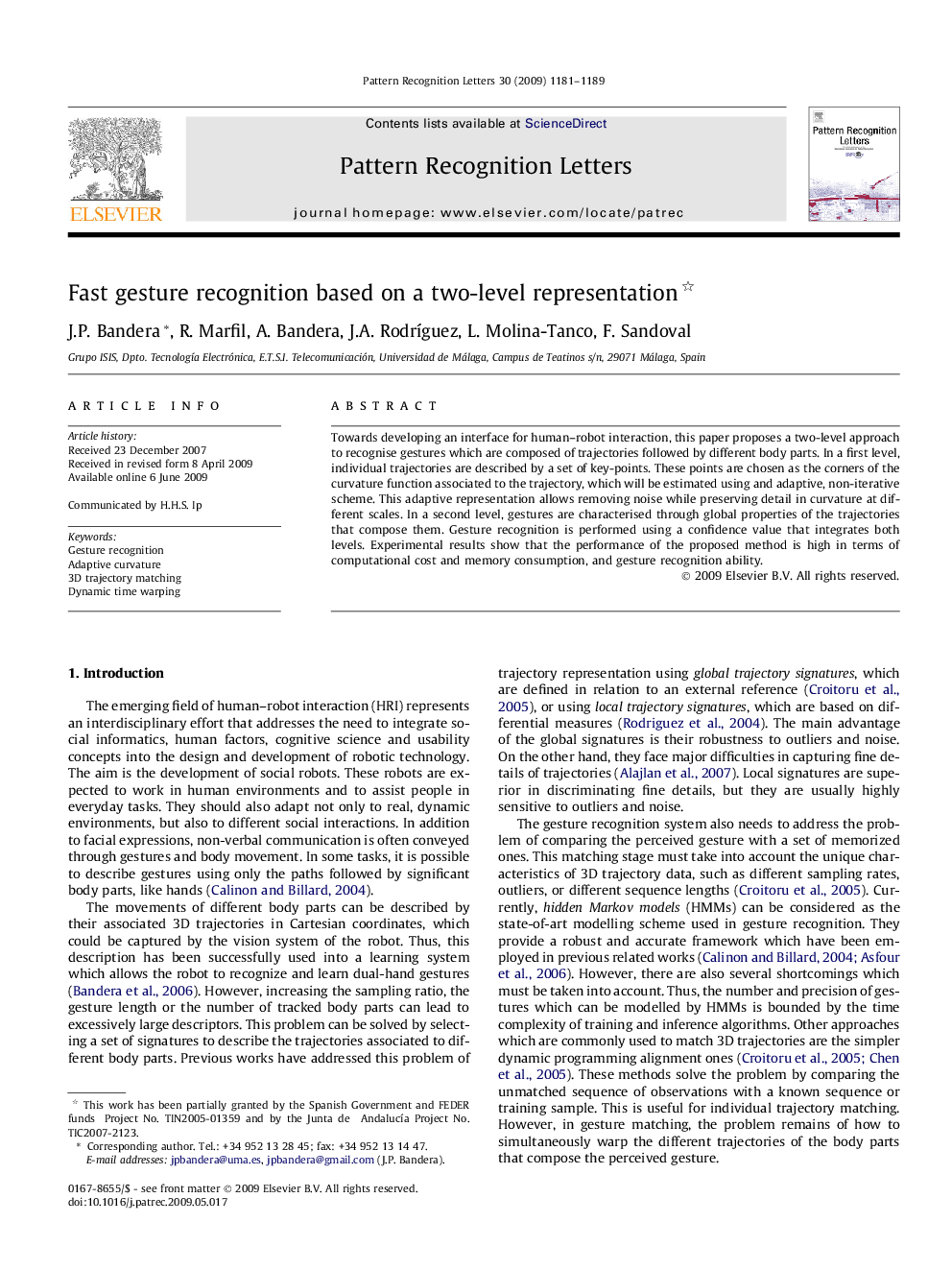| Article ID | Journal | Published Year | Pages | File Type |
|---|---|---|---|---|
| 535087 | Pattern Recognition Letters | 2009 | 9 Pages |
Towards developing an interface for human–robot interaction, this paper proposes a two-level approach to recognise gestures which are composed of trajectories followed by different body parts. In a first level, individual trajectories are described by a set of key-points. These points are chosen as the corners of the curvature function associated to the trajectory, which will be estimated using and adaptive, non-iterative scheme. This adaptive representation allows removing noise while preserving detail in curvature at different scales. In a second level, gestures are characterised through global properties of the trajectories that compose them. Gesture recognition is performed using a confidence value that integrates both levels. Experimental results show that the performance of the proposed method is high in terms of computational cost and memory consumption, and gesture recognition ability.
